Meet the Sonata 2.0T's Evil Twin
By this point, you should know all about the excellent new turbocharged, direct-injection four-cylinder engine from Hyundai and, by extension, Kia. We've spent plenty of pixels gushing about the engine's power and efficiency when lodged in the nose of the 2011 Hyundai Sonata 2.0T, and judging from our time behind the wheel of the 2011 Kia Optima 2.0T, the engine is no less at home lighting up the tires of the newest sedan from Kia. Buyers looking for a four-door with a little more edge than the Honda Accord, Toyota Camry or even the embiggened Sonata will be happy to see that the newest interpretation of the Optima wears some seriously aggressive sheetmetal outside to go with some of the best power and fuel-efficiency in the mid-sized sedan class.
Kia says that the Optima 2.0T was built to be the Sonata's more menacing cousin, and in addition to the sedan's brawny lines and 274-horsepower four-cylinder turbo, the company's engineers folded in a firmer suspension and reworked power steering system for a more athletic driving experience. The changes may not be enough for us to call the 2011 Optima 2.0T a sport sedan, but they do serve to give the vehicle a significantly different flavor compared to the 2011 Sonata. We jumped into the driver's seat of the 2011 Kia Optima 2.0T SX to find out just what those changes meant on the road.
Continue reading...
2011 Kia Optima 2.0T - Click above for high-res image gallery
By this point, you should know all about the excellent new turbocharged, direct-injection four-cylinder engine from Hyundai and, by extension, Kia. We've spent plenty of pixels gushing about the engine's power and efficiency when lodged in the nose of the 2011 Hyundai Sonata 2.0T, and judging from our time behind the wheel of the 2011 Kia Optima 2.0T, the engine is no less at home lighting up the tires of the newest sedan from Kia. Buyers looking for a four-door with a little more edge than the Honda Accord, Toyota Camry or even the embiggened Sonata will be happy to see that the newest interpretation of the Optima wears some seriously aggressive sheetmetal outside to go with some of the best power and fuel-efficiency in the mid-sized sedan class.
Kia says that the Optima 2.0T was built to be the Sonata's more menacing cousin, and in addition to the sedan's brawny lines and 274-horsepower four-cylinder turbo, the company's engineers folded in a firmer suspension and reworked power steering system for a more athletic driving experience. The changes may not be enough for us to call the 2011 Optima 2.0T a sport sedan, but they do serve to give the vehicle a significantly different flavor compared to the 2011 Sonata. We jumped into the driver's seat of the 2011 Kia Optima 2.0T SX to find out just what those changes meant on the road.
Continue reading...
Photos copyright ©2010 Zach Bowman / AOL
Critics of Hyundai's "Fluidic Sculpture" design language can rejoice at the more masculine (if traditional) visage of the 2011 Optima. There are more than a few whiffs of BMW in the Korean sedan's lines thanks to a pair of aggressive front fenders as well as a bulging hood. Combined with a pair of scowling, wraparound HID headlights, the elements team up to create a sedan that shares more than a passing resemblance with the big-bad 5 Series.
But that's not to say that the Optima is a carbon copy of the Bimmer. The four-door manages to make the look its own thanks to its signature Kia grille, a blacked-out roof and a subtle windshield detail that repeats the lines of the front fascia. There's no mistaking the nose of this machine as anything from Germany, either. The Optima 2.0T wears one of the most aggressive faces of the mid-sized sedan segment thanks to a pair of exaggerated fog light insets and faux canards positioned down low. Like its corporate cousin, the Optima 2.0T model is defined by a low-slung, sporty profile that's exaggerated by the vehicle's stylish 18-inch wheels. The flush-designed rollers clearly distinguish the forced-induction Optima from its 2.4-liter powered brother.
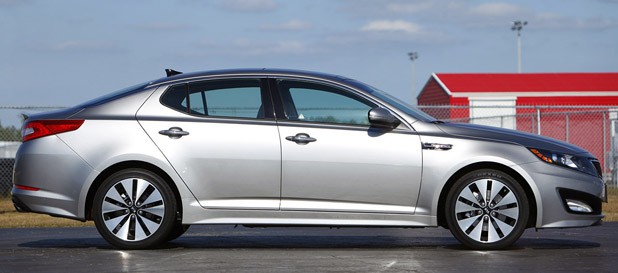
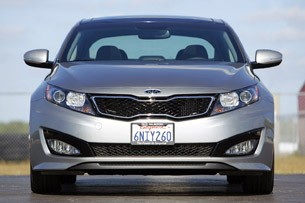
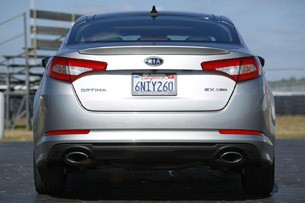
The differentiation continues around back, where the Optima boasts a set of very stylish LED taillamps and a small lip spoiler. Twin oval exhaust tips and red-lettered 2.0 GDI badges give the tail of the Optima a little more flash, and the swept rear glass and tall deck height make for a mean stance. The combined effect is a sedan that looks both clean and athletic. But for as sharp as the exterior of the Optima 2.0T is, the company's designers seem to have lost the plot indoors.
The trouble starts with the vehicle's leather seats. The buckets are trimmed with cloth mesh that looks like it was borrowed from a Dallas Cowboys practice jersey. While the contrasting gray stitching is a sharp addition, we found the mesh trimmings to be simply unattractive. In following with the sportier-than-thou mantra of the Optima 2.0T, the designers also incorporated a driver-oriented center stack that would be nice if it weren't for the expanses of bland matte black plastic surrounding the touchscreen interface, audio and climate controls. Whereas the doors and center console are treated to attractive carbon-fiber detailing, the dash is left to soldier on with its acres of cheap feeling black plastic.
Buyers will be able to pick up their Optima turbo in either EX or SX trim, and while EX buyers will be able to choose between black, tan and grey interior colors, SX buyers are stuck with all black, all the time. That means if you want those hot 18-inch wheels, HID headlights, LED tail lights and the slick rear spoiler, you're stuck with the one-color-fits-all interior.
Regardless of whether you opt for EX or SX trim, the Optima 2.0T comes with an excellent drivetrain. Under the hood, a turbocharged 2.0-liter direct-injection four-cylinder musters up 274 horsepower and 269 pound-feet of torque. The engine is paired with the sharp in-house six-speed automatic transmission built by Hyundai/Kia and makes use of the same clever fuel-saving and horsepower-building technologies as found in the Sonata 2.0T. While plenty of manufacturers are mating direct injection and forced induction to create V6 horsepower with inline-four displacement, Kia has managed to craft an engine capable of dishing out V6-besting horsepower and four-cylinder-topping fuel economy in the same package. Even better, it does it on regular unleaded gas.
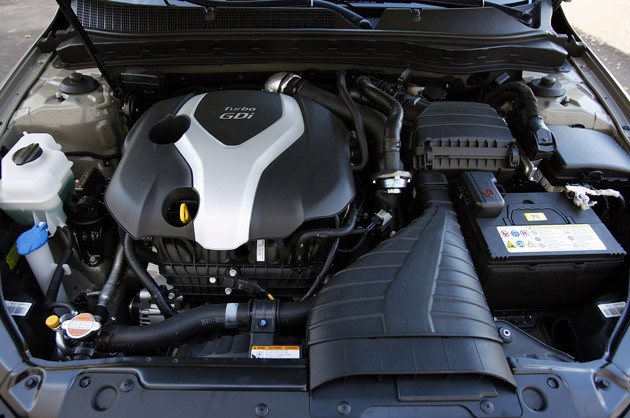
One of the more clever tricks is found in the intercooler system. The piece uses some crafty duct work to funnel air through the intercooler in a specific route, keeping outlet temperatures 50 degrees cooler than what's seen without the ducting. That drop in temperature helps increase fuel economy, horsepower and engine response – all things that put a smile on our faces.
The engine also uses the same innovative twin-scroll turbocharger integrated into a cast stainless-steel exhaust manifold. Both lighter and more durable than cast-iron two-piece units, the trick piece of kit was necessary to make sure that the engine could stand up to significant abuse. Since Kia boasts one of the best warranties in the industry, the company doesn't want to be replacing turbochargers on a regular basis.
Kia also opted to employ what it calls a "counter-spiny liner" to the outside of the cylinder sleeve. Using sprayed aluminum, the manufacturing process increases the sleeve's surface area, allowing for more efficient cooling. Kia's engineers say that the liner helps keep temperatures low enough to reduce the likelihood of bore deformation. That means that even as the engine racks up miles, owners aren't likely to see the kind of oil blow-by that's notorious on older turbo engines.
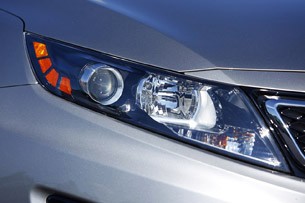
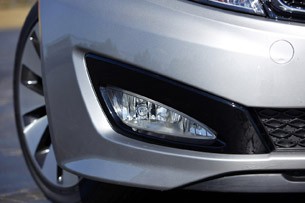
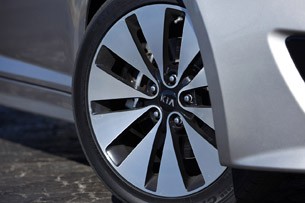
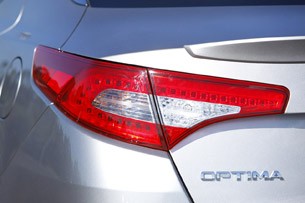
But all of that's identical to what's found in the Hyundai Sonata 2.0T. Kia made it clear that the Optima is a sportier alternative to the swept-nose Hyundai, and to that end, the company set about making the Optima handle with a little more precision. They started by reprogramming the electric power steering to provide a slightly heavier wheel. Additionally, firmer shocks help take away some of the float, and in SX trim, the engineers swapped the standard 11.8-inch front brake rotors for larger 12.6-inch discs to provide an extra level of stopping prowess.
What does all of that add up to on the road? There's no mistaking the difference in personality between the Optima 2.0T and the Sonata 2.0T. The two may be cut from the same cloth, but the vehicles' seamstress was using entirely different patterns. We were able to spend time behind the wheel of the Optima 2.0T SX and were surprised to hear quite a bit more road noise in the cabin compared to the Hyundai. With less rubber to soak up vibrations from the sun-baked Miami asphalt thanks to the larger 18-inch wheels and a mouthy tread pattern from the low-profile Nexen tires, drone from the interstate is more than a little noticeable.
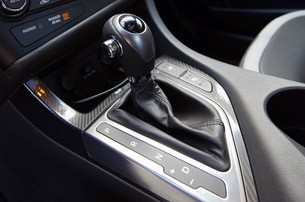
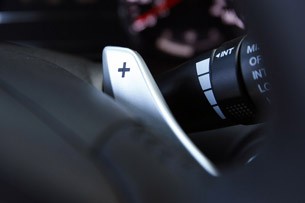
Likewise, while those firmer shocks are meant to deliver a vehicle with more sporting intentions, they merely serve up a jarring ride over broken asphalt and changes in the road surface. Kia was kind enough to host us at the Palm Beach International Raceway for a few laps behind the wheel of the SX, and while we felt that the steering went past well-weighted and into downright heavy on the street, the wheel was right at home amidst the apexes and chicanes of the short track. Out on the glassy-smooth surface of the raceway, those firmer shocks helped to deliver a ride that was well planted, even at speeds over 115 mph. That's not exactly something to scoff at for a vehicle built for getting Dad and the groceries home in one piece.
Unfortunately, we can't imagine too many Optima 2.0T buyers wheeling their sedan into the paddock on the weekend for a little track time. Out of the race complex and into the real world, power from the 2.0T is excellent. Despite all of the grunt on tap, even from as low as 1,800 rpm, there's next to no torque steer. According to Kia's engineers, that's thanks to some clever work in keeping the engine out of boost just long enough keep the front wheels planted on acceleration. This machine isn't going to be winning any 0-60 mph dashes any time soon, but the drivetrain is incredibly forgiving toward drivers with an overactive right foot.
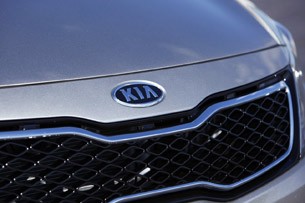
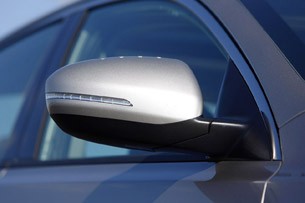
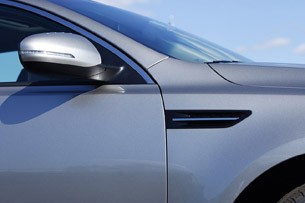
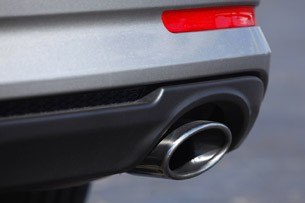
The EPA has rated the 2011 Optima 2.0T at 22 mpg city and 34 mpg highway. Even after a dozen or so full-throttle laps around Palm Beach, our tester still read 24 mpg combined, and we can't wait to see what the vehicle returns in a more realistic driving scenario.
On the road, the Optima 2.0T is perfect for fencing with Miami traffic. The larger front discs deliver confident braking, and the torquey 2.0-liter four-cylinder has no problem serving up enough power to make short work of point-to-point passes. Rearward visibility is hampered somewhat by the large, solid C-pillar in the Optima, and we found ourselves missing the extra piece of glass in the Sonata design. Still, with the Optima's wing mirrors in the right spot and the helpful rearview camera, we weren't exactly concerned for our safety or those around us.
Kia has priced the 2011 Optima 2.0T SX at $25,995, though our tester landed a shave over $30,800 with destination thanks to a premium package that threw in tricks like the excellent dual-pane sunroof, power heated-and-cooled front seats and heated rear thrones. Our SX also came equipped with a technology package that rolled in navigation and a sweet Infinity sound system. If you don't have your heart set on the aggressive bodywork of the SX, the Optima 2.0T EX comes in at $24,995.
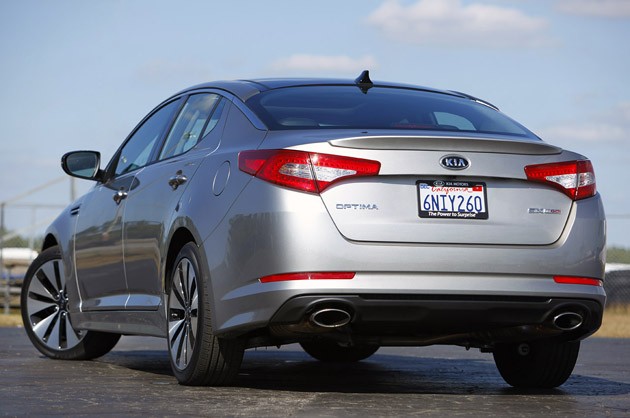
Even loaded with those options, the Optima 2.0T lands within tagging distance of less well-equipped hardware like the Honda Accord V6 at $27,080 and the Toyota Camry V6 at $26,195. The case for those offerings gets even thinner when we start comparing horsepower and fuel economy figures. Honda's bread-and-butter sedan lands with four fewer ponies and just 30 mpg highway, and the Camry doesn't fair much better at 268 hp and an embarrassing 29 mpg highway. In fact, the only model out there that can really give the Optima a run for its money is the Hyundai Sonata 2.0T with its identical power and fuel economy figures.
In the end, the decision between the Sonata 2.0T and Optima 2.0T SX will simply come down to styling preference. We all know that car buying is largely driven by a vehicle's aesthetics, and while the Sonata's face isn't going to be for everyone, few will disagree that the Optima 2.0T is one very handsome machine. While the Optima's louder cabin, heavy steering and less attractive interior are sure to be detractors for some buyers, we're guessing that Kia isn't going to have a problem finding people to take these machines home.
Photos copyright ©2010 Zach Bowman / AOL
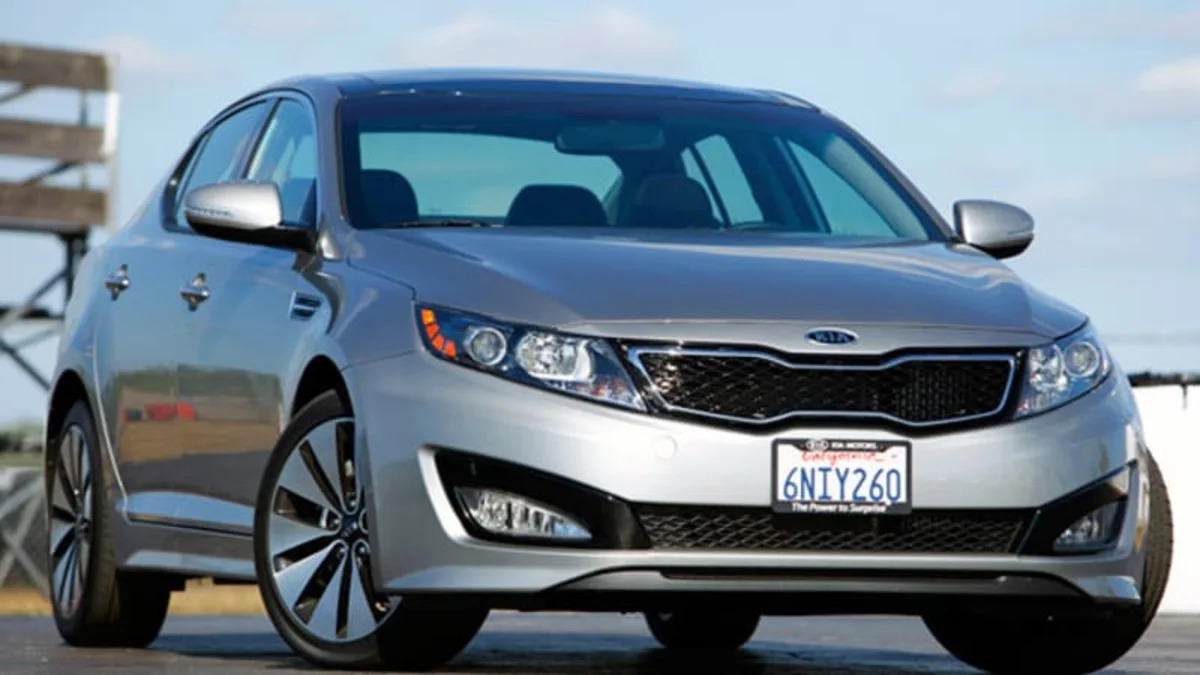
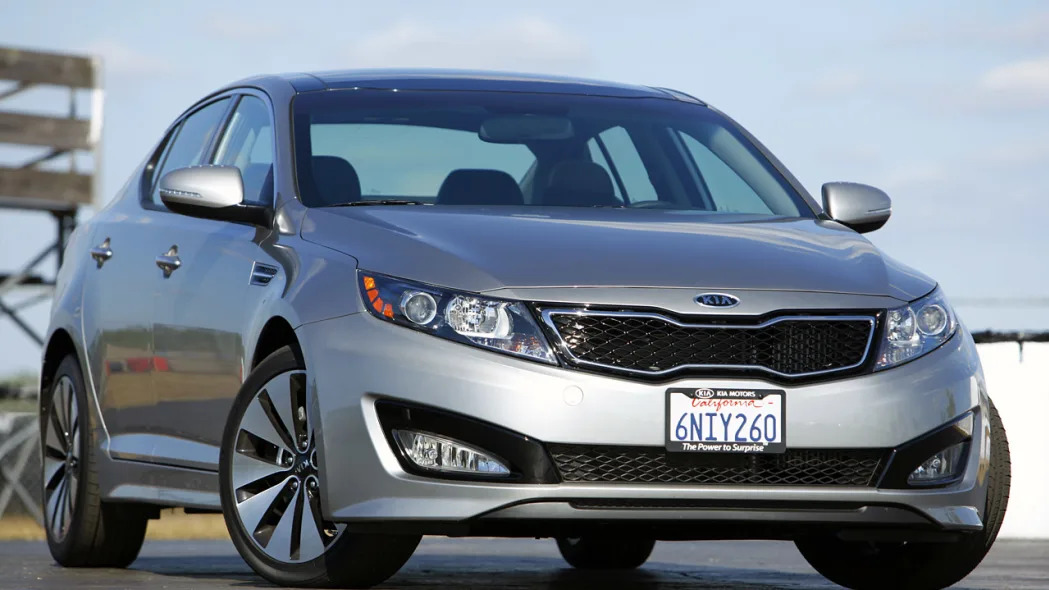
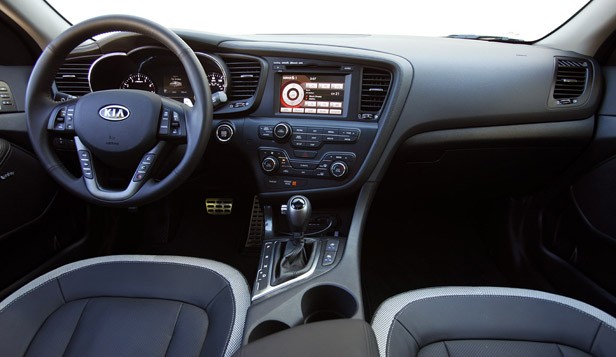
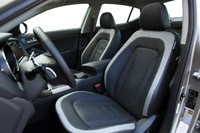
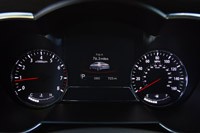
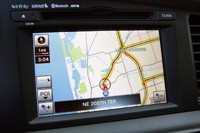

Sign in to post
Please sign in to leave a comment.
Continue